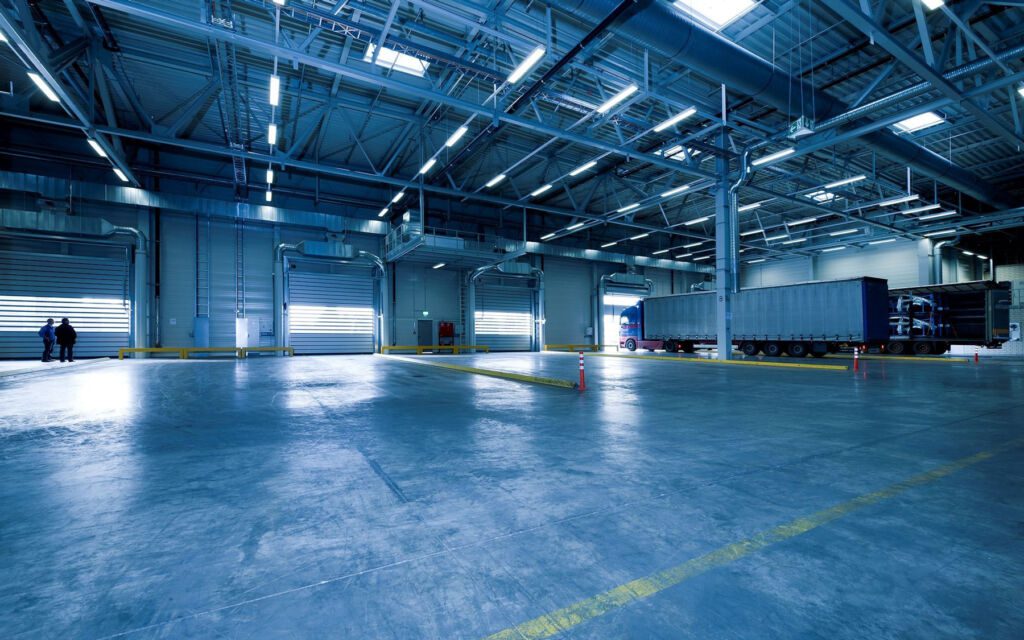
Introduction: A Common but Seldom Discussed Problem
Starting up a new warehouse or distribution center, or transitioning from one to another, is a common activity for many wholesalers and retailers. It’s usually driven by company growth, the use of overflow warehouses during peak business periods, or the need to realign a distribution network because of things like corporate acquisitions, store closures, and seasonal changes in demand patterns. At the request of some customers, I wanted to share best practices for ramping-up inventory for a new distribution center (DC) and transitioning distribution lanes from the old DC(s) to a new one. This must be done right to maintain service levels while avoiding excess inventory costs. While a Google search yields a lot of articles about the physical aspects of getting a DC up and running, I found surprisingly very little about the supply chain planning aspects of this process. So here are my thoughts based our work with a number of wholesalers and retailers.
Defining the Problem with an Example
Consider a food distributor serving a few hundred stores out of several regional DCs. (I’m going to use “stores” for the rest of this article to keep it simple, but the same logic could be applied to any downstream distribution point, such as a customer warehouse.) To accommodate growth, the distributor is going to add a new DC and transition 50 stores from existing DCs to the new DC. In theory you could plan on a single changeover date, decrease purchases at the old DCs, pre-build inventory at the new DC, and on the changeover date, start fulfilling all demand from the 50 stores out of the new DC.
But in the real world, this is usually not practical for a number of reasons. For one, you will probably not have enough trucking capacity to accommodate the sudden addition of a new origin point. Second, in the case of a brand new DC, you will probably need time to train employees and work out the kinks. And third, doing everything at once could put your business at risk.
So in practice you will want to plan a gradual stepping up of volume at the new DC. Now the question is how exactly do you do that and what does it mean for forecasting, inventory, and purchasing decisions at the old and new DCs. Below is a checklist of things to keep in mind.
Checklist for Ramping-Up Inventory for a New Distribution Center
- Decide on a Gradual Transition Schedule. I suggest you plan to changeover by a fixed number of stores per time period, e.g., 5 new stores per week. The exact numbers depend on the specifics of your situation. Each group of stores will thus have a different changeover date. In the example above with a new DC serving 50 stores, you would ramp-up to 50 stores over the course of 10 weeks.
- Choose Groups of Stores to Transition. The stores mapped to the new DC should of course be as close as possible to the new DC to minimize trucking needs. Each changeover group of stores (group of 5 in the above example) should also be in close proximity with each other.
- Prioritize Fast-Movers for Overflow Warehouses. If using overflow warehouses during times of peak sales, prioritize fast-moving items to stock at such warehouses. This will simplify operations by minimizing the number of items and making it more likely that warehouse workers are dealing with pallets rather than cases. This is especially true if using a 3PL facility where you will have less control over training and operations.
- Schedule Resources, Employees, and Training. You will need to make sure equipment, infrastructure, and employees are in place in the right amounts at each location to accommodate the changeover. Then you will need to proactively train employees scheduled to work in the new facility to ensure a smooth transition.
- Split Your Aggregate Forecast by Week. For each item, you need to allocate the aggregate forecast among the old and new DCs by week according to the transition schedule. Demand will ramp-up in a stepwise fashion for the new DC and likewise down for the old DCs. If you are doing store-level forecasting, you just need to add up the relevant stores for each DC by week. If you are doing aggregate forecasting, you will have to split the aggregate forecast based on some assumptions about the volume for each grouping of stores.
- Ramp-Up Purchasing Plans for the New DC. You need to pre-build inventory in the new DC to accommodate the step-wise increase in demand. Be sure to take into account key parameters such as supplier lead times. While you don’t want to buy too much, you can err slightly on the high side because you won’t need to worry about space constraints in the new DC during ramp-up.
- Ramp-Down Purchases at the Old DCs. Decrease purchases for the old DCs to match the anticipated stepwise decrease in demand. Pay special attention not to over-order, or you could create a real glut of inventory as volume ramps down.
Other Aspects of Ramping-Up a DC
This article focuses on inventory planning and scheduling distribution lane changeover. For an excellent case study on other operational aspects of bringing a new DC online, I recommend an article by Lia Winograd, CEO of online apparel retailer Pepper, “How We Transitioned Warehouses in Only 30 Days With Zero Downtime,” about how the company switched 3PL warehouses to accommodate a rapidly growing business. They have a B2C business model, so they are using parcel shipping to deliver to households rather than trucking bulk shipments to B2B customers, but it’s an interesting case study nevertheless for both B2C and B2B companies. (This is one of the few relevant web articles I found on the topic of DC ramp-up.)
Conclusion
Supply chain planning for ramping-up a new DC is an important process for companies that are growing or redesigning their distribution network. We advise companies using our Supply Planning application or other supply chain planning applications to go through the above checklist every time they ramp-up a new DC. Investing effort in enabling this process is important for ensuring a smooth transition, maintaining service levels, and minimizing inventory costs.
To Learn More
To learn how New Horizon can help you with your DC ramp-up process, contact us – we’d love to talk.


